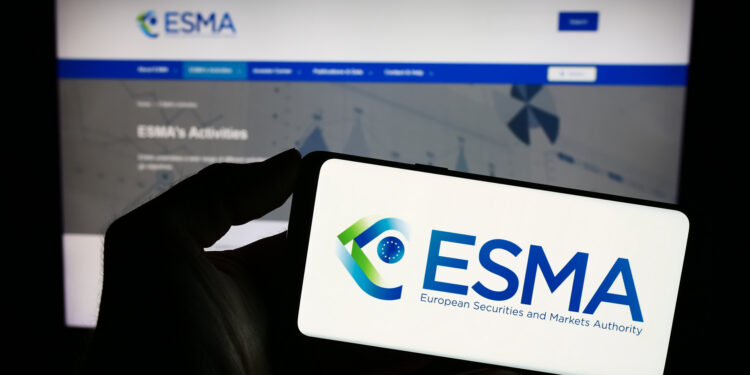- ESMA warns that crypto’s growing links to traditional finance could pose serious risks, especially during market shocks, despite crypto currently making up less than 1% of global financial assets.
- While crypto isn’t yet systemically important in the EU, ESMA urges caution, noting that regulatory safeguards like MiCA may not fully prevent future instability.
The European Union’s main financial watchdog is once again sounding the alarm on crypto. This time, it’s not about scams, fraud, or shady offshore exchanges. It’s more about the entire sector’s potential to spill over into traditional markets and cause real damage.
In a report published on April 8, Natasha Cazenave, executive director of the European Securities and Markets Authority (ESMA), told the European Parliament that crypto’s current footprint may be small —but that doesn’t mean it’s harmless. Especially not in the context of a fragile global economy being rattled by U.S. policy moves and mounting geopolitical stress.
“EU financial markets are, as we speak, under severe strain coming from the broader political and geopolitical developments,” Cazenave said in a speech published Tuesday.
It’s not hard to see what she’s referring to. Stock markets have been on edge since US President Donald Trump announced a fresh barrage of tariffs last week —news that also triggered another leg down in crypto prices and nuked entire portfolios across the world.
While both equities and digital assets rebounded slightly on Tuesday (only to go back down on Wednesday), the volatility reflected just how tightly coupled these markets are becoming. Doubling down on that speculation and volatility, the report states that not even the new MiCA framework for digital assets can protect the industry:
Despite MiCA, there will be no such thing as a safe crypto-asset. Crypto-assets are highly speculative, with prices subject to sudden and extreme fluctuations.
 ESMA
ESMANot exactly a confidence boost from the EU’s top markets regulator, but it is what it is.
Related: Hefty Fee: Trader Pays $60,000 for a Single Bitcoin Transaction
ESMA outlines that crypto is “still small”, but the bridges being built between it and the traditional financial system could carry contagion in a crisis. Moreover, the agency emphasised that a shock in the crypto sector —like a stablecoin losing its peg— could ripple outward, impacting the financial assets that back it and potentially destabilising broader markets.
“Crypto-assets markets are still comparatively small. However, in the current market environment, turmoil even in small markets can originate or catalyse broader stability issues in our financial system,” Cazenave said.
ESMA isn’t waiting for something of that nature to happen (again). In January, under the MiCA framework, it forced crypto service providers to cut ties with non-compliant stablecoins, leading to major exchanges like Binance and Coinbase to delist tokens like Tether’s USDT and DAI for EU users.
Dangerous, But Not So Dangerous?
Still, the numbers paint a picture of a sector that’s not yet systemically important —at least not in the EU. ESMA, contradicting itself, notes that crypto-focused funds represent less than 1% of the entire EU fund market, and a whopping 95% of European banks aren’t involved in crypto at all.
But those guardrails may not hold forever. Across the Atlantic, US regulators are already loosening restrictions. President Trump, whose family is now reportedly building a crypto venture, has been pushing for lighter-touch rules, especially on stablecoin legislation.
Whether you see that as a step toward innovation or a warning shot depends on your risk tolerance. But for now, ESMA’s position is cautious: crypto doesn’t pose a systemic threat today, but if ties to traditional finance continue to deepen, tomorrow might be a different story.
Related: Australia Cracks Down on Crypto Scams, Winds Up 95 Companies
Credit: Source link




















